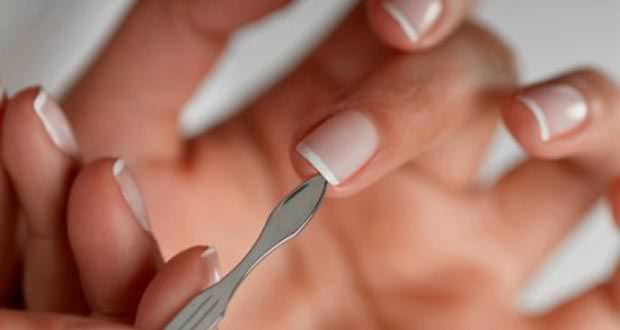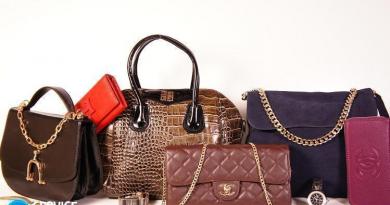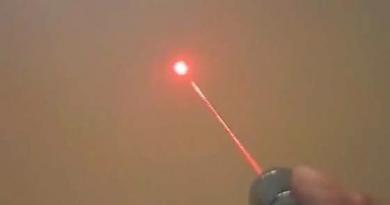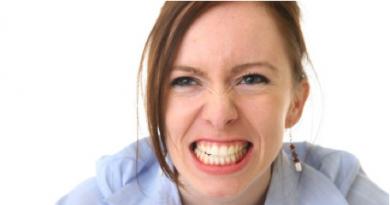Nails are characterized by an increased degree of vulnerability, since both their own diseases and ailments that affect the body as a whole affect their condition and health. In most cases, the cause of problems with the nail plates is a variety of fungal formations, but diseases can also be infectious or result from injuries.
The main and most common problems associated with the condition of the nails will be discussed in detail in this article.
fungal diseases
Mycosis is the most common fungal infection that affects both the nail plates and the skin.
The main cause of the occurrence is a violation of the rules of personal hygiene, other features of the disease are discussed below:
- Molds affect only the surface and do not penetrate deep into the structure, but still pose a serious threat. The main symptom is a change in color, which can take on various green, yellow, blue or black hues.
- Mycosis caused by the activity of yeast fungi, has other manifestations, since the infection penetrates deep into the structure, gradually destroying it. At the same time, the nail itself usually begins to turn yellow, and on the sides it becomes thinner. Often the surface of the skin around it is also affected, it can turn red and begin to peel off, in the most difficult situations, inflammation of a purulent type occurs.
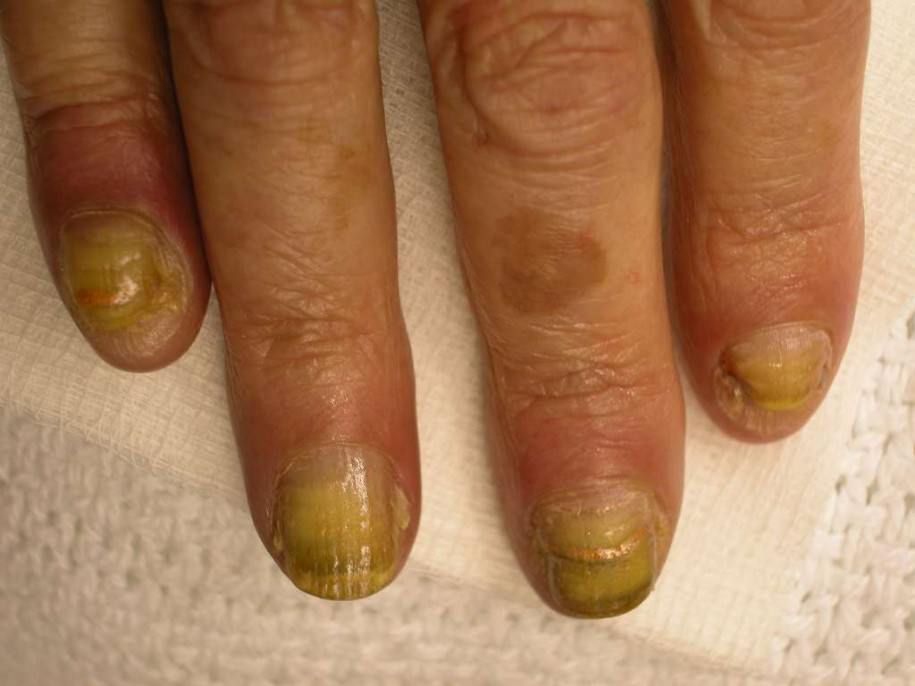
Treatment is prescribed only by a specialist. At the initial stage, soaking the affected nail plate in baths with the addition of soap and baking soda, as well as subsequent treatment with antifungal varnish or a special ointment, can help. In more difficult situations, oral drugs are prescribed, but in fact all of them are prohibited during pregnancy.
The started treatment cannot be interrupted, in parallel, the processing of shoes and other items that may be infected is required. Not fully cured mycosis will certainly cause a relapse, while the fungus will develop resistance to the drug that was used to eliminate it.
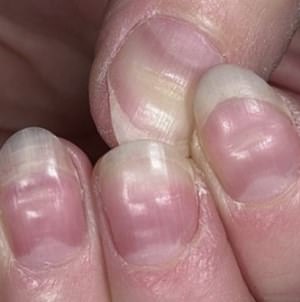 Another common fungal disease is epidermophytosis, which can also affect not only the nail plates, but also the skin around.
Another common fungal disease is epidermophytosis, which can also affect not only the nail plates, but also the skin around.
main symptom consists in a noticeable increase in the density of the nail, which leads to the formation of bumps or loose areas, gradually this contributes to the delamination of the plate. In parallel with this, redness of the adjacent skin, its inflammation, peeling and a feeling of itching can be observed.
Candidiasis
The causative agent of this disease is a specific fungus, most often it penetrates through microscopic damage to the skin or derivatives of the epidermis, in particular, when performing manicure procedures.
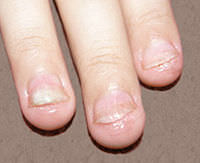 main symptom is reddening of the skin and the appearance of noticeable swelling around the nails, as well as pain when touched. This is due to the ingress and active reproduction of a fungal infection under the nail roller.
main symptom is reddening of the skin and the appearance of noticeable swelling around the nails, as well as pain when touched. This is due to the ingress and active reproduction of a fungal infection under the nail roller.
Before prescribing therapy, confirmation of the diagnosis is required, for which scrapings are taken from the affected areas. Suitable preparations in the form of ointments are selected by a specialist in each specific case; applications with pure ichthyol are also practiced to eliminate inflammatory processes.
Ringworm or nail microsporia
main symptom It consists in the appearance of characteristic stripes or spots, which may be white or yellowish in color. Usually, at the initial stage, the edge of the nail plate is affected, but gradually the fungus moves towards its base. For this reason, you should not delay the treatment, because over time it will take more and more time. As the fungus spreads, it can be observed that the affected areas become discolored and become much more dense.
Treatment requires complex therapy, which will consist of oral administration of pharmacological preparations containing terbinafine or itraconazole, as well as topical application of iodine tincture, sulfur-tar ointment and salicylic acid.

Non-fungal diseases
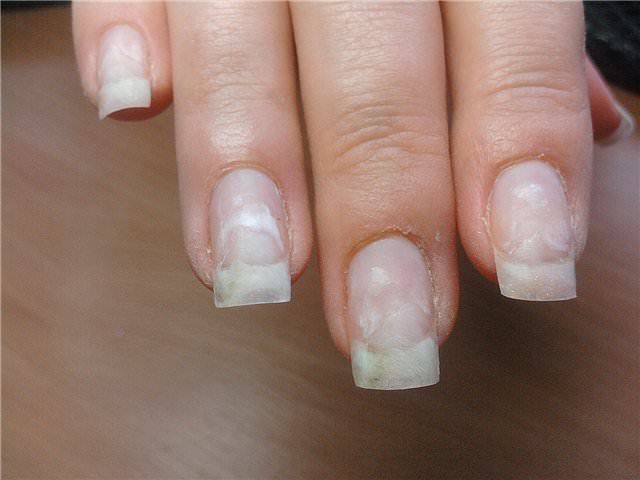 This disease is usually affected by people suffering from psoriasis, the main signs of the disease and how to eliminate it are described below:
This disease is usually affected by people suffering from psoriasis, the main signs of the disease and how to eliminate it are described below:
- The disease begins to manifest itself in the form of a change in the shade of the nail plate: it becomes cloudy until it completely turns white.
- The cause of the occurrence is the existing psoriasis, in other cases, this disease can provoke prolonged use of decorative varnish of too poor quality or mechanical damage.
- In case of mechanical damage, no treatment is required, in other cases, an examination by a specialist is necessary, who will prescribe therapy taking into account the causes of leukonechia. Usually, together with pharmacological preparations, vitamin-mineral complexes are prescribed. In the initial stages, you can use traditional medicine, for example, salt baths or rubbing a mixture consisting of freshly squeezed lemon juice and olive oil.
This is another common disease that affects the nail plates; existing psoriasis or mechanical damage can provoke it.
At the initial stage, the nail completely changes its color and becomes white, then delamination or its complete loss may be observed. In some cases, only partial peeling occurs along the edges and a characteristic unpleasant odor appears.
Treatment implies complex therapy, which will consist of taking vitamin complexes, the use of hot baths with the addition of potassium permanganate and the local use of a solution of tinol or heliomycin ointment.
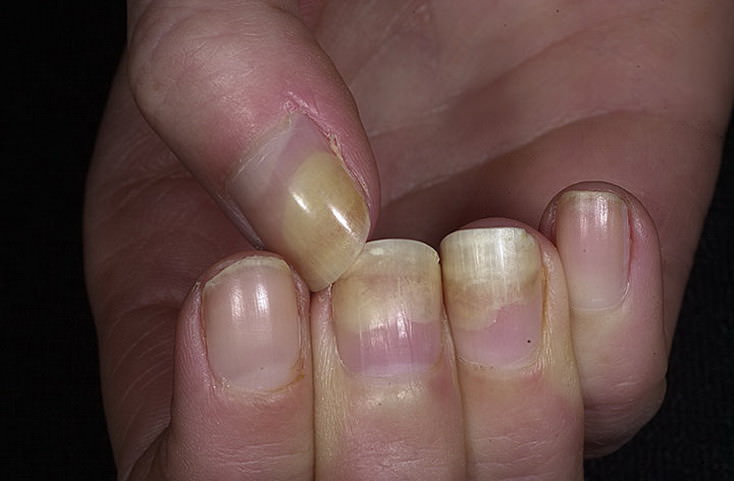
The cause of this disease may be an acute allergic reaction or a non-fungal type infection.
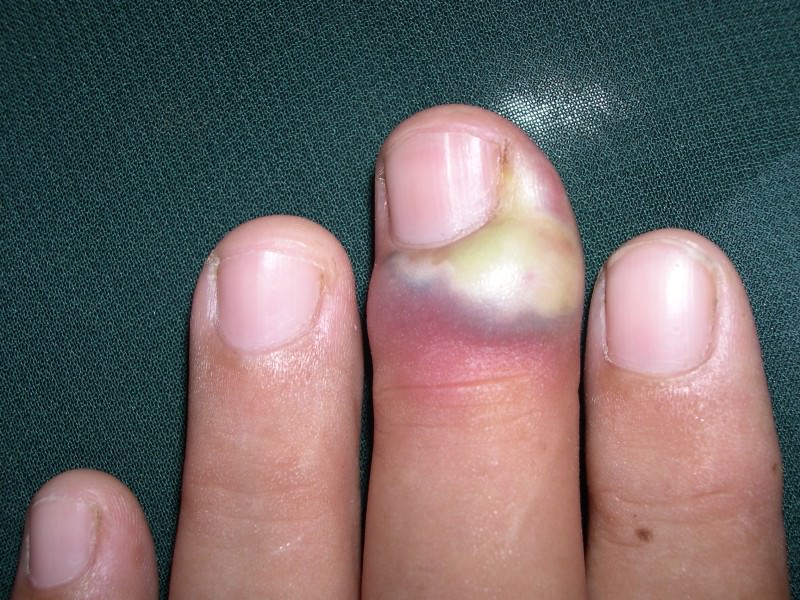 main symptom is an inflammation of the periungual roller, it always leads to severe reddening of the skin adjacent to the nail, and acute pain. In later stages, suppuration occurs around the affected area.
main symptom is an inflammation of the periungual roller, it always leads to severe reddening of the skin adjacent to the nail, and acute pain. In later stages, suppuration occurs around the affected area.
At the initial stages, an appeal to a specialist is not required; antiseptic baths based on baking soda or eucalyptus tincture can be used for treatment. If the situation has been started, then a visit to the doctor is required, who will open the abscess in a safe way and apply a suction bandage.
Injuries
When receiving mechanical injuries, the following changes are usually observed that affect the condition of the nail plate:
- Color change, strong darkening.
- Visible deformation, change in shape.
All these processes are a natural response to mechanical stress, so no treatment is required. In the presence of severe damage, there may be a gradual peeling of the nail until it completely falls off. Complete regeneration usually requires no more than 8 months, surgical removal is practiced only in rare cases when complete detachment for some reason does not occur or is delayed, preventing the growth of a new nail.
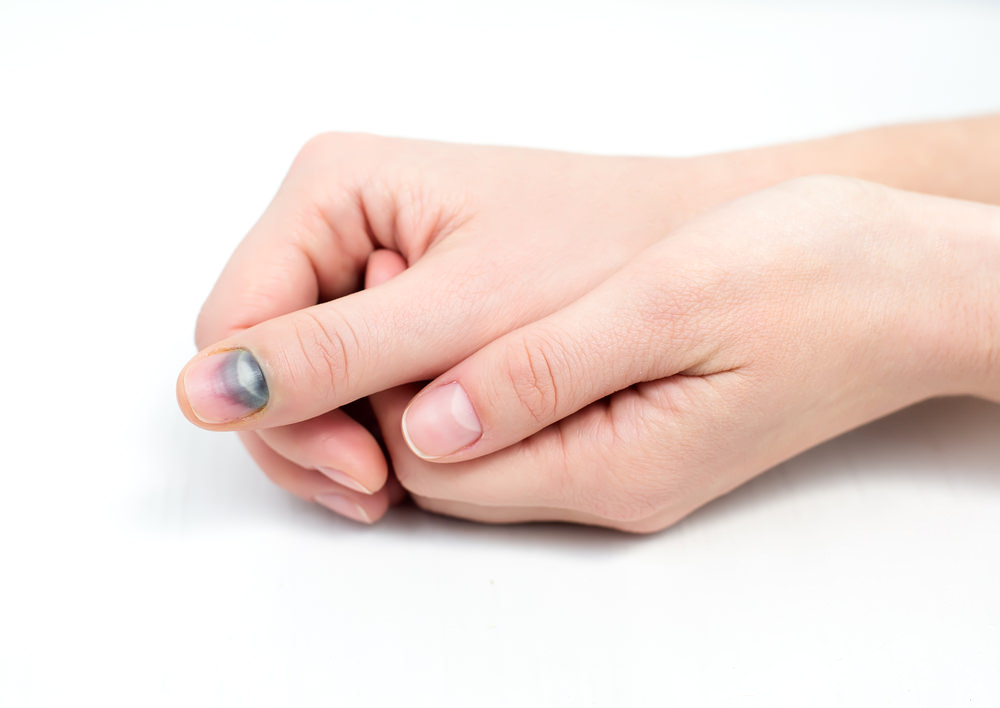
bundle
Split nails are a common problem that a person can experience at any age.
Violation of the integrity of the structure of the plates and the deterioration of their appearance usually occurs for the following reasons:
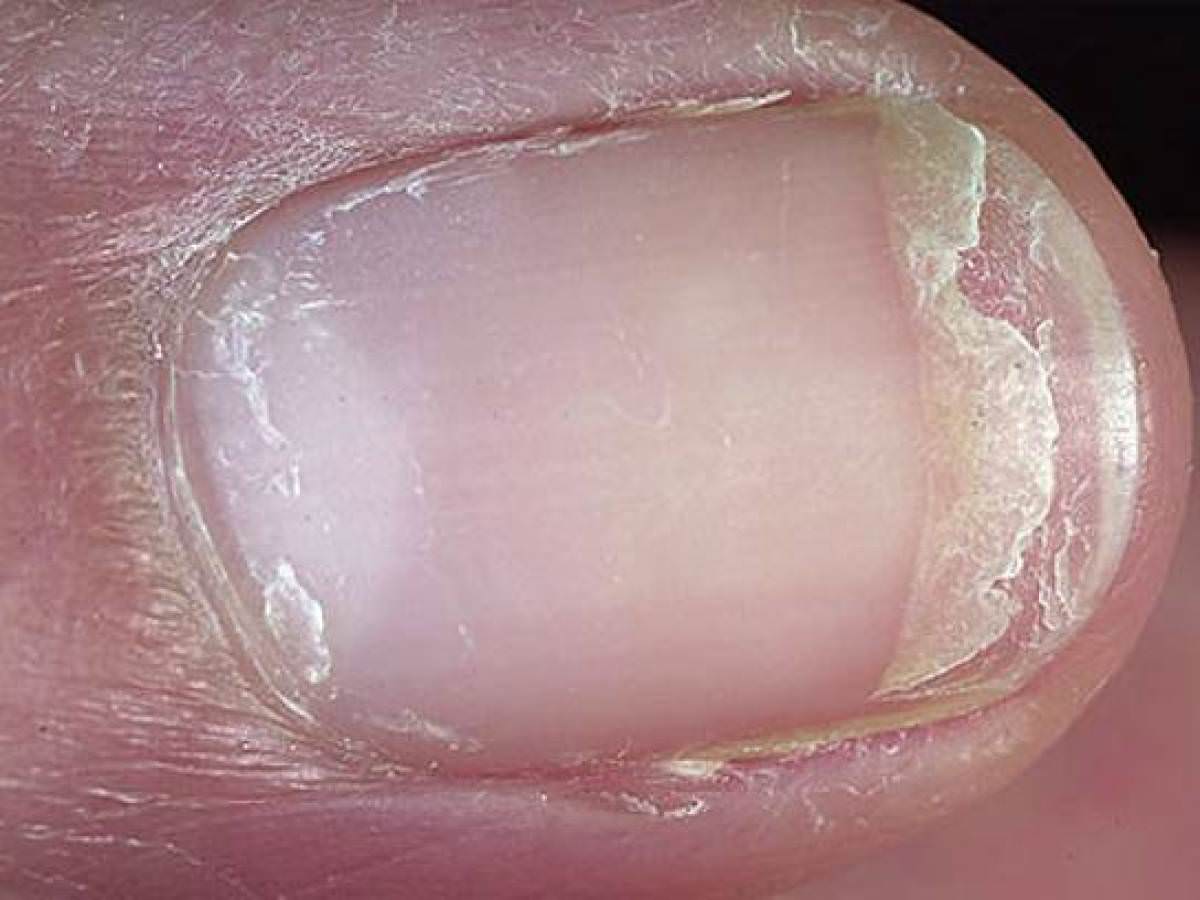
To prescribe treatment, it is important to correctly determine the causes of the disease, taking into account what therapy is prescribed.
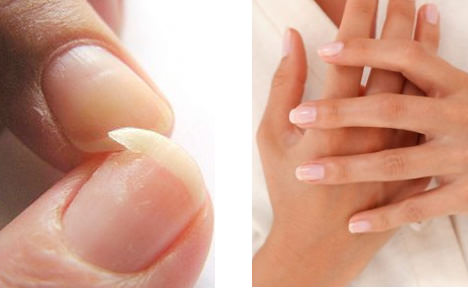
Summing up, the following tips and recommendations regarding preventive measures can be given. Compliance with the following conditions allows you to minimize the risk of diseases or any other problems associated with nail damage:
- Visiting only proven manicure and pedicure salons, in which qualified professionals use only disinfected instruments.
- Maintaining a healthy lifestyle with regard to both the rejection of bad habits, and the observance of the daily regimen.
- Compliance with basic rules of personal hygiene, regular nail trimming and removal of all impurities.
- wearing shoes, which is correctly selected taking into account the anatomical features of the legs, since the occurrence of calluses or excessive sweating can provoke various fungal infections.
- Using only quality varnishes for creating decorative coatings.
- Carrying out preventive procedures for and taking various vitamin and mineral complexes if necessary.
